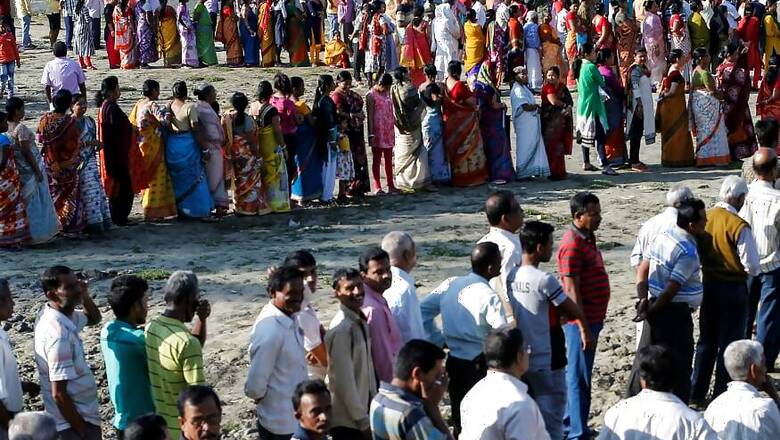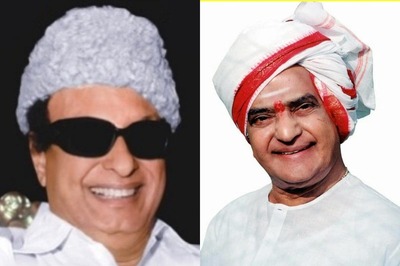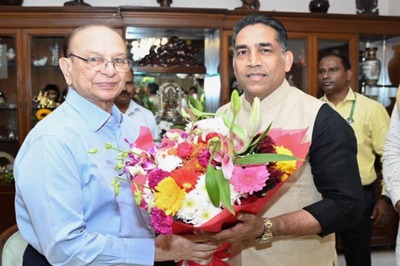
views
New Delhi: When 13 constituencies in Uttar Pradesh are done voting in Phase 4 on Monday, almost half of the state would have made up its mind on who they are sending to Parliament.
With a voting schedule spread across seven phases over 80 Lok Sabha seats, in a state as politically crucial as UP, every seat witnesses a different battle with its own caste and religious demographics. The seats going to polls on Monday — Akbarpur, Etawah, Farrukhabad, Hamirpur, Hardoi, Jalaun, Jhansi, Kannauj, Kanpur, Kheri, Misrikh, Shahjahanpur, and Unnao — are no different.
The Bharatiya Janata Party (BJP) had won 12 of these in 2014, with Dimple Yadav securing only Kannauj — a traditional Samajwadi Party (SP) stronghold — for the SP. The BJP gathered a total vote share of nearly 45 per cent, whereas SP and the Bahujan Samaj Party (BSP) collected almost 22 per cent and 20 per cent of the votes, respectively.
Even in the 2017 state assembly elections, the BJP registered a landslide and bagged 60 of the 67 assembly segments that fall in these Lok Sabha constituencies, including four of the five segments in Kannauj. This was a significant improvement over the party’s performance in 2012, when it had won just nine seats in the region. Amid the saffron wave, SP, which had won 41 assembly segments in 2012, was reduced to just five.
Caste and Religious Demographics
Much like any other part of the state, caste equations are set to dominate the scene in these constituencies as well. Compared with the seats that went to polls in the first three phases, phase 4 constituencies have a relatively lower Muslim population (about 10-15 per cent). At the same time, upper castes form a significant chunk of the population, with Brahmins, specifically, comprising a sizable share of the electorate in several of the 13 constituencies — Hardoi, Unnao, Etawah, Kannauj, Kanpur, Akbarpur and Hamirpur. A scenario that the BJP would want to capitalise on.
Similarly, communities such as Lodhas, Kurmis and Kushwahas gain significance in a number of constituencies such as Farrukhabad, Hamirpur, Kheri, and Jhansi among others.
Yadavs are a factor almost across all these seats. Also, Scheduled Castes account for about 23 per cent of the population and Dalits, which are a part of the SCs, have significant presence in Etawah, Hardoi, and Misrikh where Pasis — a Dalit community — hold a strong influence over the poll outcome.
Amid these demographics, the SP-BSP combine would look to consolidate the Dalit-Muslim-Yadav votes and may want to attract other OBCs (Lodhas, Kurmis, Kushwahas, etc.) into its fold to surprise the BJP.
Farm Distress and Bundelkhand
Three of the four seats which are a part of what is called the Bundelkhand region in Uttar Pradesh will be on the line in the fourth phase. Like Maharashtra, Bundelkhand also witnesses significant variations in Monsoon rains every year and therefore, is a region prone to frequent droughts.
Amid this backdrop, farm distress remains a major issue in Jalaun, Jhansi and Hamirpur. Here too, the BJP has remained a force to reckon with. The party has won all these three seats in 1991, 1996, 1999, and 2014. Even in 2004, when the saffron party won only a single seat among the 13 in this phase, it was Jalaun.
Mahendra Singh Rajput, a farmer from Jhansi whom News18.com had spoken to earlier over phone, said that there will be a tough contest between the BJP and the alliance with an edge to the former, despite the issues that the people in the region have been facing.
Is Congress a Challenger?
With an average 14 per cent vote-share between 1996 and 2014, the Congress has remained a marginal player on these seats with an exception of 2009 Lok Sabha elections when the party bagged six seats in total and 27 per cent of the votes.
However, the grand old party is a significant player in Kanpur. Before the BJP dethroned it in 2014, Congress’s Sri Prakash Jaiswal had held the seat since 1999, marking three consecutive wins for the party. Prior to that though, the BJP had also won the seat thrice in 1991, 1996, and 1999.
In 2014, the party had come second with 30 per cent of the total valid votes. Also, it was only the third seat in this lot where the party registered a vote-share in double-digits. The other two constituencies were Kheri at 17 per cent and Unnao at 16 per cent.
Although Congress may not be in a position to repeat its 2009 Lok Sabha tally, Kanpur might be Congress’s best shot among Phase-4 seats where the party has again fielded the three-time MP Jaiswal.




















Comments
0 comment